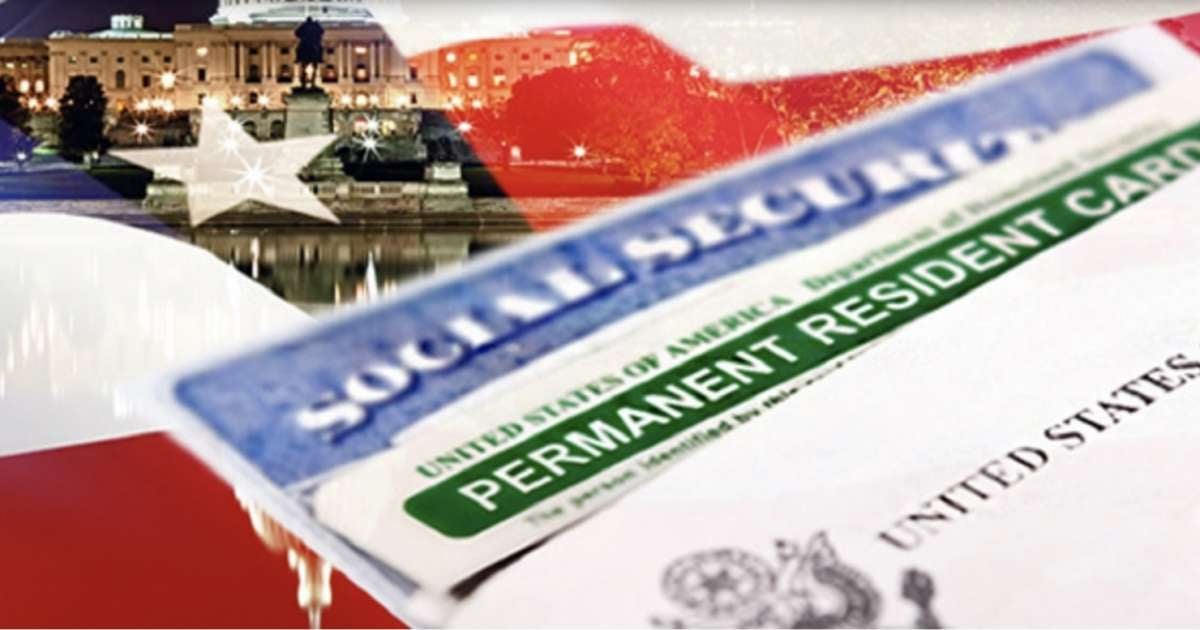On June 21, the United States Citizenship and Immigration Services (USCIS) announced the commencement of producing the first permanent resident cards (Green Cards) for applicants who legally entered the country on December 16 under this program. This development was confirmed by Cuban journalist Mario J. Pentón, who provided direct evidence of approved cases and celebrated on social media the reactivation of status adjustment procedures.
"This process has definitely been unfrozen," Pentón stated. "It's a fantastic update for the hundreds of thousands of Cubans, Venezuelans, Nicaraguans, and Haitians who were anxious because they lacked work permits or had their parole revoked."
Change in Political Narrative
The measure follows shortly after the Department of Homeland Security (DHS) officially lifted the administrative suspension that had stalled asylum applications, Temporary Protected Status (TPS), and status adjustments for migrants under the CHNV program. In a notable shift, the DHS now acknowledges that these beneficiaries entered the country legally, contrasting with the previous narrative that labeled them as illegal entrants.
"This narrative shift is quite striking," Pentón remarked during a live broadcast. "The Trump administration is now recognizing their legal entry, which is crucial for unlocking pending cases."
Impact on Cuban Families
One of the approved cases involves a Cuban family that entered through parole on December 16. "The I-485 application—the form for status adjustment under the Cuban Adjustment Act—is now being processed. Their card is in production," Pentón explained, displaying the official notifications sent by USCIS.
The family, choosing to remain anonymous, reached out directly to the journalist to share the positive news. Like many others, they had been in limbo for months, uncertain about their application status and fearing their future in the U.S.
What Does This Mean for Other Cubans?
USCIS has begun processing files that were frozen since December. The first Green Cards are being produced for parole beneficiaries who have applied for status adjustment. The DHS has authorized the continuation of asylum, TPS, and status adjustment applications. Those without legal status are urged to voluntarily leave the country using the CBP One app.
This progress could pave the way for thousands of Cubans who entered legally under parole to regain the legal stability they need to rebuild their lives in the United States. Since January, when President Donald Trump signed the executive order canceling the CHNV (Cuba, Haiti, Nicaragua, and Venezuela) program, more than half a million migrants were caught in legal limbo, including over 110,000 Cubans.
The decision brings relief to thousands of Cuban families. However, not everything is guaranteed. Many beneficiaries have yet to meet the minimum one-year requirement to qualify for the Cuban Adjustment Act, and there is a risk of deportation if they fail to regularize their status in time. Additionally, the Trump administration may impose new restrictions at any moment.
Key Questions About Cuban Immigration Status
What is the significance of the USCIS resuming Green Card production?
It marks the reactivation of the immigration process for those who entered the U.S. legally under the parole program, providing them with a path to permanent residency.
How is the DHS's change in narrative affecting Cuban migrants?
The DHS now recognizes their legal entry, which is crucial for processing their pending cases and helps them avoid being labeled as illegal entrants.
What challenges do Cuban migrants still face despite this progress?
Many migrants have not yet fulfilled the one-year requirement for the Cuban Adjustment Act, and they face possible deportation if they fail to adjust their status in time.
